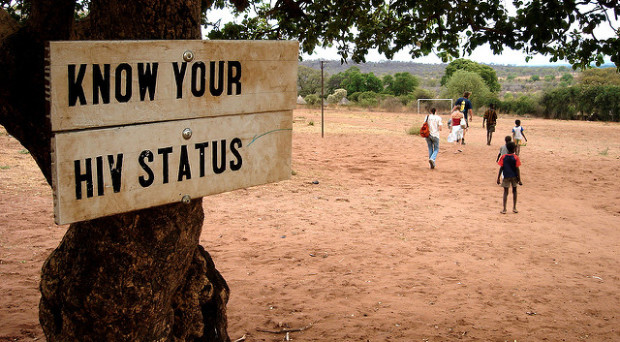
In the early days of the AIDS epidemic, most schools taught absolutely nothing about AIDS. The few teaching guides available focused on information (‘the T-cell is like the general of an army, protecting your body from invaders’). Curricula didn’t have behavioral objectives.
We weren’t trying to prevent AIDS in teens because teens weren’t getting it.
But now we know that AIDS is caused by HIV, and that youth ages 13 to 24 account for about 1 in 4 new HIV infections in the United States. Fortunately, we now also have the benefit of over 30 years of behavioral research. There are proven ways to create effective school-based HIV prevention programs.
These five steps will make a world of difference in your HIV prevention efforts.
1 . Use evidence-based or evidence-informed programs
Choose a program using a comprehensive approach—you want it to focus on both abstinence and safer sex. It must include information about accessing and using condoms when young people do choose to have sex.
Other essential elements? Increase knowledge—but focus on functional knowledge that relates to choosing healthy behaviors, not esoteric information about biological processes.
Engage in classroom activities that allow students to learn and practice real-life skills such as refusing pressures, negotiating safer choices or seeking help when troubled.
Engage in classroom activities that allow students to learn and practice real-life skills such as refusing pressures, negotiating safer choices or seeking help when troubled. And take steps to increase parent-child communicating about relationships and sex.
Increase perceptions of risk. Help students develop attitudes, values and beliefs that support making healthy choices. Help youth correct misperceptions of peer behaviors. For example, most teens overestimate the number of their peers who are currently sexually active (e.g., have had sex within the past three months).
New research also supports what’s called ‘contextual’ HIV/STD prevention education. That means recognizing that romantic relationships influence sexual choices. We need to teach prevention skills that are realistic and logical within the framework of those relationships.
The U.S. Office of Adolescent Health Teen Pregnancy Prevention Resource Center, the CDC’s Compendium of Evidence-Based Interventions and Best Practices for HIV prevention, and ETR’s Program Success Center can all guide you towards effective programs.
2. Use language in a thoughtful and informed way
Young gay and bisexual men (and other men who have sex with men) and transgender women have the highest risk for HIV. To reduce HIV risk, it’s imperative that school programs use inclusive language, activities and content to engage LGBTQ students. ETR’s Supporting LGBTQ Youth supplement for sexuality education programs is a great resource to assist in this effort.
It’s also important to use non-blaming language that takes into account experiences of coercion and forced sex. Use a trauma-informed approach in general when teaching sexuality education.
Finally, be sure to review programs to make sure the information and attitudes are current and accurate. Older programs sometimes still talk about HIV/AIDS as a ‘death sentence’. They may fail to mention HIV treatments or strategies such as PrEP (pre-exposure prophylaxis) which can prevent new infections.
3. Create a safe school environment
Sexual minority youth are most at risk for HIV. They are also frequent targets of bullying and harassment.
Sexual minority youth are most at risk for HIV. They are also frequent targets of bullying and harassment. Tragically, many schools do not take appropriate steps to protect these students.
Not only does this potentially violate federal law, it results in more truancy by LGBTQ students. If students are missing classes, they’re not receiving the education they need and deserve.
Implement policies that specifically mention protections for sexual minority youth and create a safe environment for all students.
4. Use comprehensive school health approaches across multiple areas of risk and take steps to address social determinants of health
Put the 15 characteristics of effective health education to work. Address attitude-shaping and skills practice that reach across multiple risk areas. A student who can resist pressure to take dares, use tobacco or drink alcohol will also be better prepared to make healthier choices and resist sexual pressures.
If we address environmental and social factors such as school connectedness and help students develop healthy skills, then young people are less likely to engage in all kinds of risky behaviors.
5. Give students access to real resources
When we give students easy access to condoms, contraception and STD/HIV testing, they’re much more likely to take steps to protect their health. One of the best ways to do this is to establish on-site school-based health centers. Another is to offer effective links to youth-friendly community resources.
Here’s a great infographic from the CDC about what a teen-friendly reproductive health visit looks like.
Back in the 1980s, few people could imagine the enduring nature of the AIDS epidemic. Today, we all can. Moving forward, there’s no excuse for doing less than our very best to create an AIDS-free generation.
It’s possible. Let’s do it!
This is a great summary of specific things to think about – not just in schools! Thanks for the embedded links.
School Based Health Centers are great – wish I had had one when I was in High School. I went to Planned Parenthood, and was glad they were there, but it was not easy taking the initiative to make appointments, taking the time to get there, and feeling very alone while doing so.